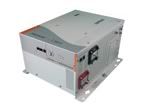Morgan Jane
Active Member
I have read thru every post that I could find on the this subject. However, haven't been able to find an answer to this question. I would like to install an inverter for powering the 120 volt outlets on both sides of the boat so that I don't have to run the Gen. while under way. The main reason for this is because my entire sound system is AC voltage now. There are only 4 batteries on a 2005 48 Sundancer. 2 Big Batteries that do everything except the Bow thruster. and 2 12 volt batteries wired in series to power the 24 volt bow thruster. Can I just hook the inverter to one of the 2 Big 12 volt batteries? or do I have to have a seperate set of Batteries for the inverter? Otherwords, can I have an Inverter hooked to a battery that is simultaneously being charged by the alternator on one of the engines? Does this cause a problem? I plan on buying the type that has the built in transfer switch that senses if AC is availble or not.
Bill
Bill




